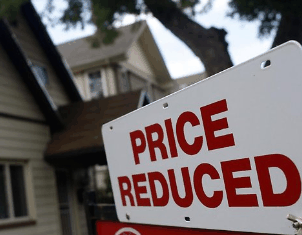
On Wednesday, the mainstream media reported on the December 2011 house price data released by Australian Property Monitors. These reports noted that national house prices rose marginally in the December quarter, breaking a year long run of negative growth. The below extract from Fairfax is indicative of mainstream media’s reporting of the APM release:
HOUSE prices have risen nationally for the first time in more than a year, dragged up by a stronger than expected result in the Melbourne market, a new report has found.
Australian Property Monitors’ latest house price report shows that the national median house price rose marginally in the December quarter from $533,521 to $533,650, while units slid backwards by 0.5 per cent.
This was the first sign of growth after five consecutive quarterly falls and was led by Melbourne house prices, which recorded the highest median growth at 1.1 per cent…
Leaving aside the fact that the $129 (+0.02%) rise in median house prices reported by APM is not statistically significant enough to be classified as a ‘rise’ (flat would have been more appropriate), today I received the media release attached to APM’s December house price results (below), which revealed that the rise in December’s house prices were caused entirely by a 0.5% downward revision in September’s results. You can see this downward revision in the following screen shots from the APM releases.
First, the September 2011 results as shown in APM’s September 2011 House Price Report:
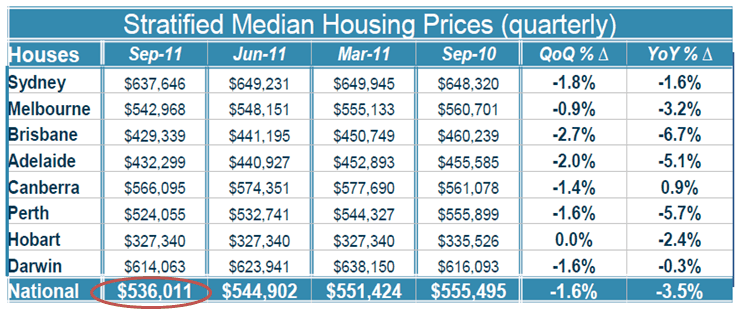
Now compare this figure for September ($536,011) against that shown in the APM’s December House Price Report (provided below):
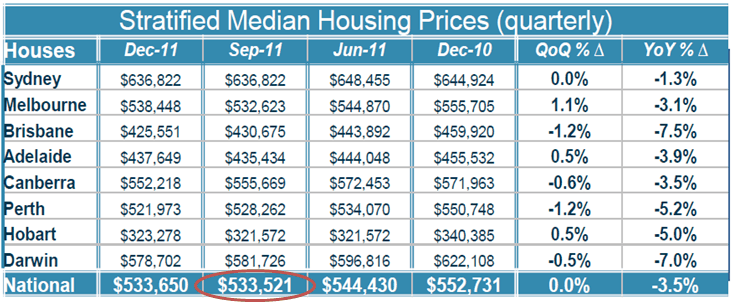
That’s a -0.5% downward revision there folks, broken down as follows:
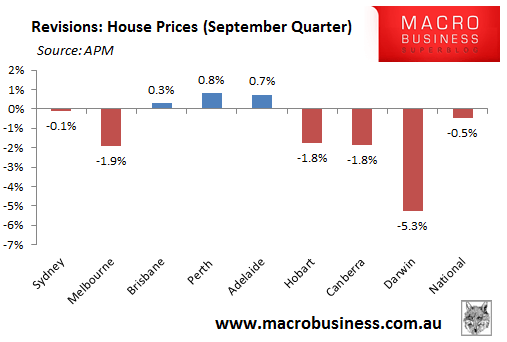
In fact, if we compare December’s numbers against APM’s September release – not the downwardly revised September figures – we see that Australian house prices actually fell by -0.4%, with Melbourne (-0.8%) lagging not leading:
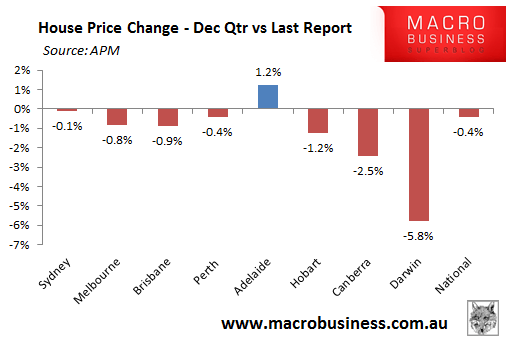
It’s not all bad news, however, with Australian unit prices actually being revised upwards by 0.6% in the September quarter:
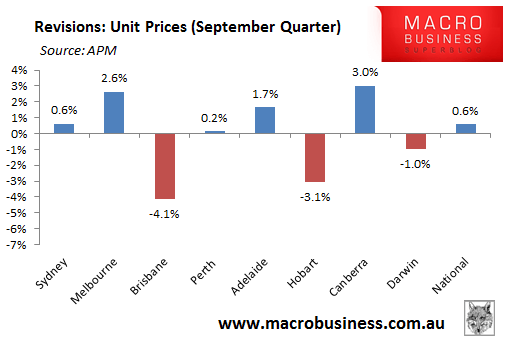
Therefore, contrary to the reports, Australian unit prices actually rose slightly in the December quarter (up 0.1%) compared with APM’s September report, with the breakdown as follows:
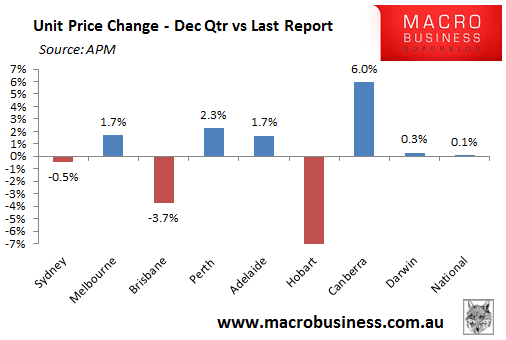
Nevertheless, the key take away is that the overall Australian dwelling price performance has worsened in the latest APM House Price Report compared with their previous (September) Report.
Finally, the below charts provide some perspective on the decline from peak house price falls according to APM, expressed in both nominal and real (inflation-adjusted) terms.
First, Australian house prices:
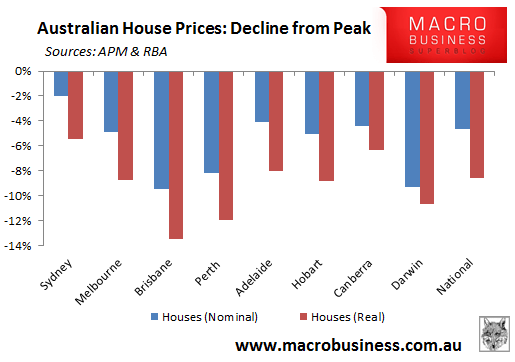
Nationally, house prices are down -4.7% nominally (-8.5% real), with Brisbane (-9.4% nominal; -13.4% real) and Perth (-8.2% nominal; -11.9% real) leading the falls.
Meanwhile, unit prices have held-up better:
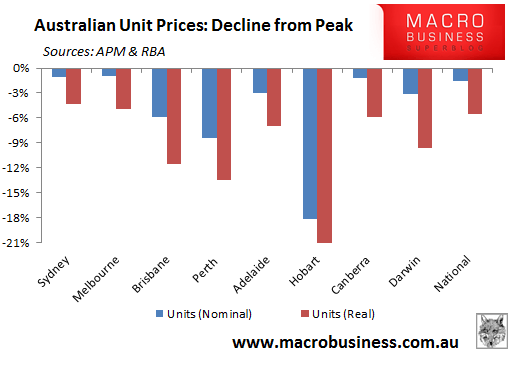
Nationally, unit prices are down only -1.6% nominally (-5.5%) real, with Hobart (-21.8% nominal; -18.1% real), Perth (-8.4% nominal; -13.5% real), and Brisbane (-5.9% nominal; -11.6% real) leading the declines.

